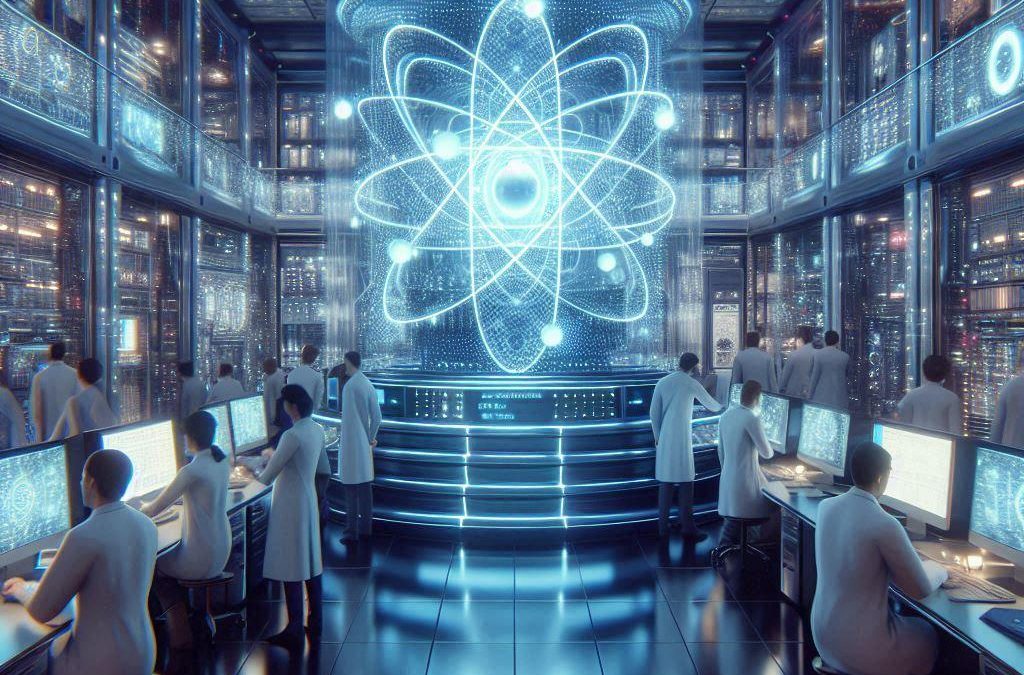
AI in Cybersecurity: Transforming Threat Detection and Response
July 10, 2024
Introduction to SEM: A Beginner’s Guide
July 16, 2024Quantum Computing: The Future of Technology
Understanding Quantum Mechanics and Qubits
Quantum Mechanics Basics
What Are Qubits?
A qubit is the basic unit of quantum information. Unlike a classical bit that can be either 0 or 1, a qubit can be both 0 and 1 at the same time, thanks to superposition. This capability exponentially increases the processing power of quantum computers. Furthermore, entanglement allows qubits that are entangled to influence each other instantaneously, regardless of the distance separating them. This interconnectedness is a crucial resource in quantum computing, enabling complex calculations that are infeasible for classical computers.
The Quantum Advantage
Speed and Efficiency
The most significant advantage of quantum computing is its potential to solve complex problems much faster than classical computers. Problems that involve large datasets and complex calculations, such as factoring large numbers or simulating molecular structures, can be solved in seconds by a quantum computer, whereas they might take classical computers millennia.
Potential Applications
- Cryptography: Quantum computing threatens to break current encryption methods, prompting the development of quantum-resistant cryptography. Shor’s algorithm, for instance, can factorize large numbers exponentially faster than the best-known classical algorithms, posing a risk to RSA encryption.
- Drug Discovery and Material Science: Quantum simulations can model complex molecular structures and interactions at an atomic level, accelerating drug discovery and the development of new materials.
- Optimization Problems: Quantum computers can efficiently solve optimization problems found in logistics, finance, and supply chain management, providing optimal solutions that can save time and resources.
- Artificial Intelligence and Machine Learning: Quantum algorithms can significantly enhance the capabilities of AI and machine learning, enabling more efficient data processing and pattern recognition.
Current Challenges in Quantum Computing
Technological Hurdles
Building a practical quantum computer is an immense technical challenge. Qubits are highly sensitive to their environment, and maintaining their quantum state (coherence) long enough to perform meaningful computations is difficult. This sensitivity requires quantum computers to operate at extremely low temperatures, close to absolute zero.
Error Rates and Decoherence
Quantum computers are prone to errors due to decoherence and noise. Decoherence occurs when qubits lose their quantum state due to interactions with their environment. Error correction is crucial, but it’s challenging because it requires additional qubits and sophisticated algorithms to detect and correct errors without disrupting the quantum information.
Scalability
Scaling up from a few qubits to the millions needed for practical applications is another significant hurdle. Each additional qubit increases the complexity of the system exponentially, and maintaining coherence and entanglement across a large number of qubits is a daunting task.
Leading Quantum Computing Technologies
Superconducting Qubits
Trapped Ions
Trapped ion qubits use ions held in place by electromagnetic fields. They offer high fidelity and long coherence times but are challenging to scale up due to the complexity of trapping and manipulating individual ions.




